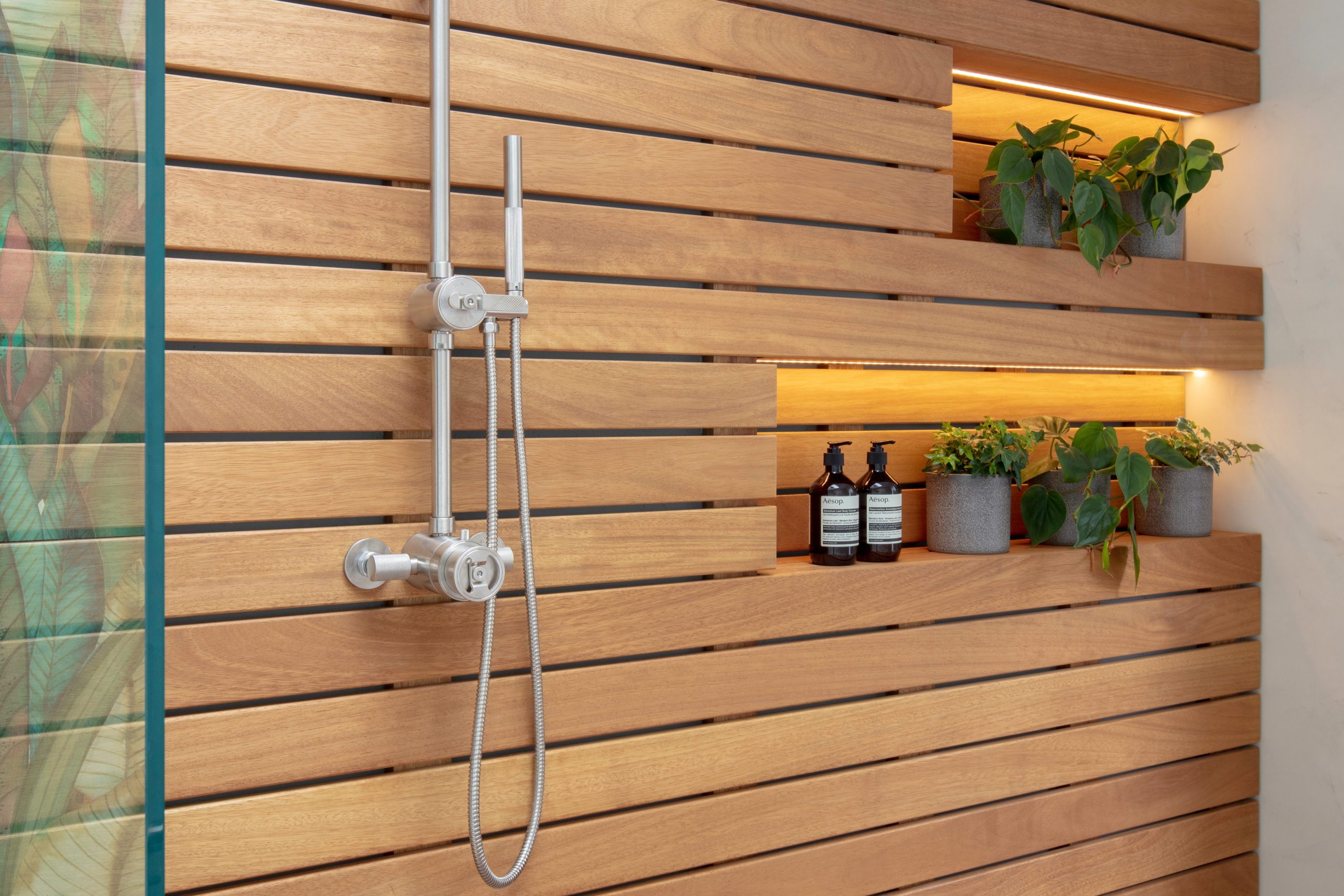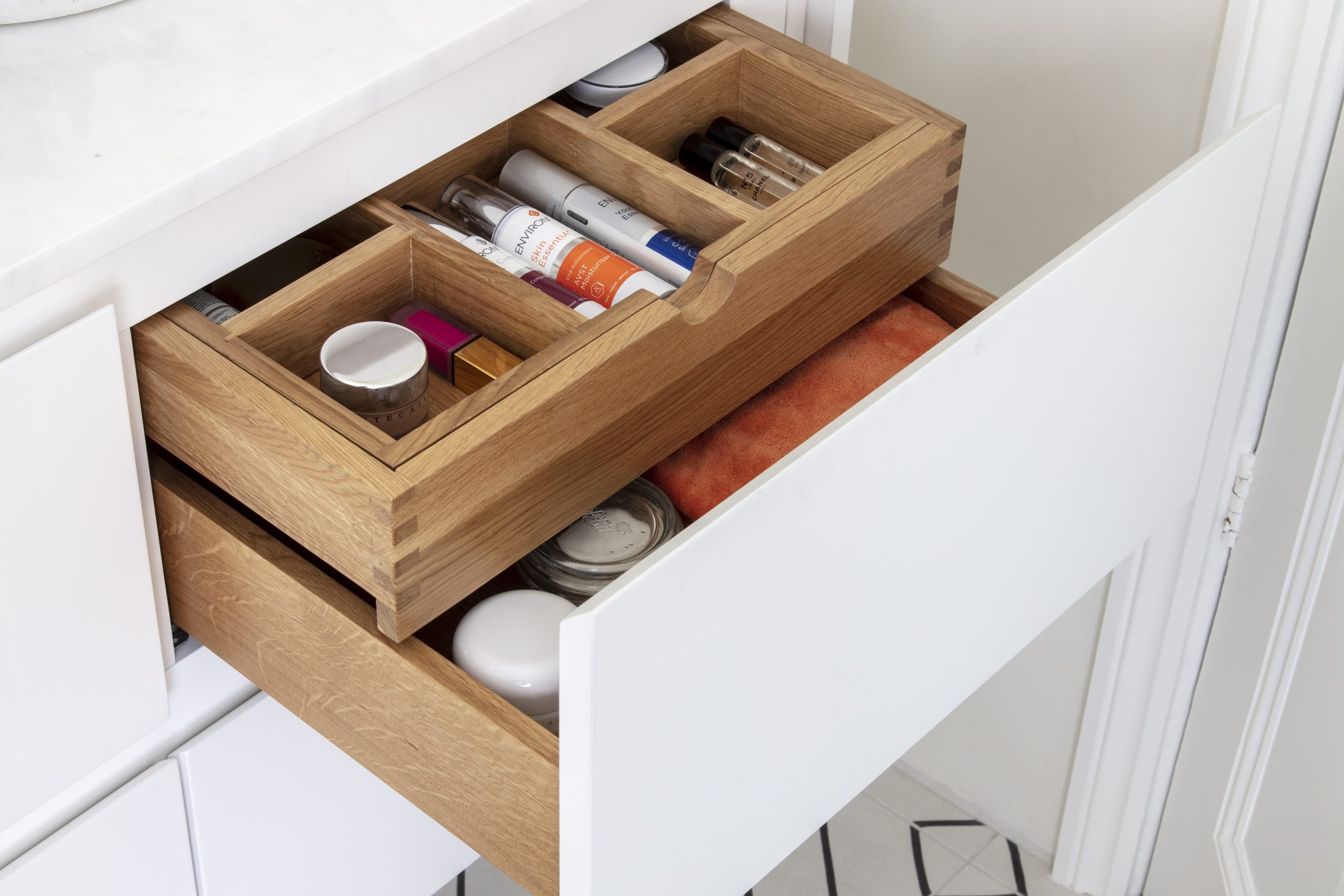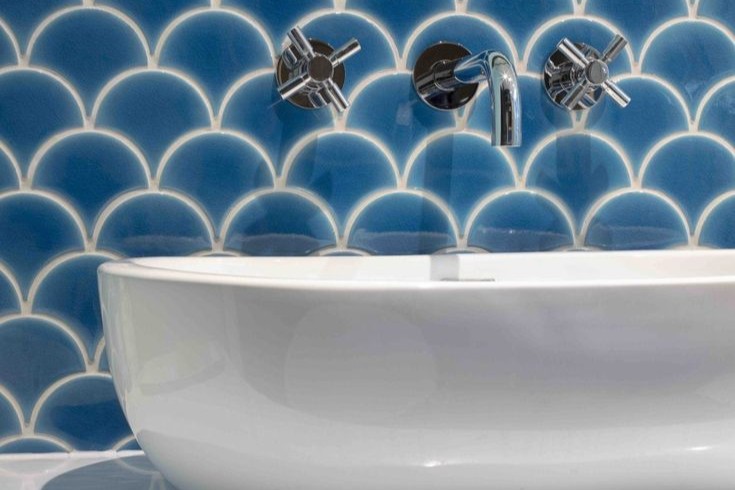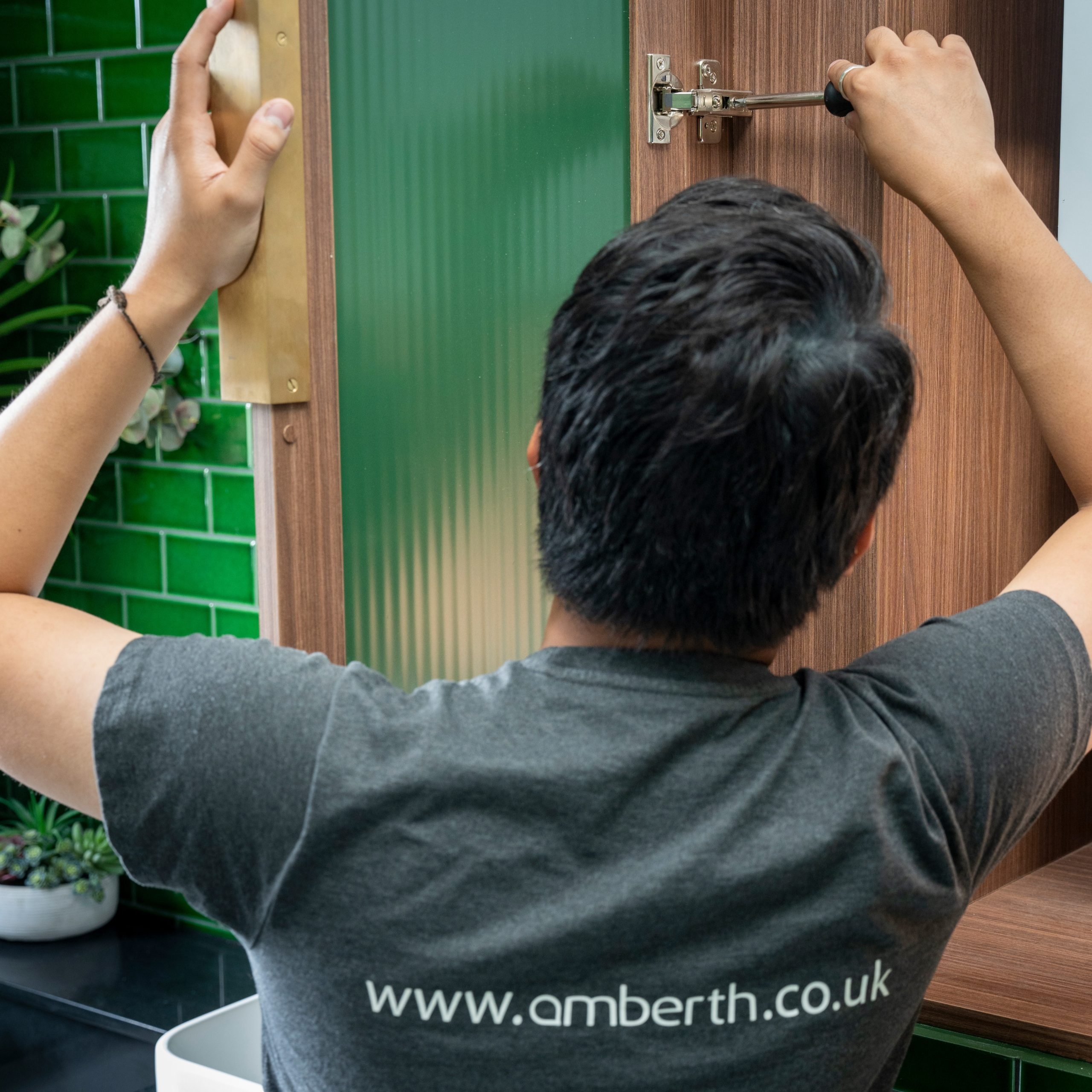Bathrooms are deeply personal spaces. We start and end our days there, often in silence or solitude. That’s why the design of your bathroom doesn’t just affect how it looks. It affects how you feel.
Through a psychological lens, the way your bathroom is designed can influence your mindset, energy, and sense of calm. When done thoughtfully, it can support daily rituals, reduce stress, and create a much-needed sense of escape. Even in the middle of a busy home. This is essentially the definition of holistic design. A space that supports your wellness – from the inside out.
Here’s how key design choices can shape your mood in ways you might not expect.
Colour: The First Emotional Cue
Colour is one of the fastest ways our brain interprets a space, and it sets the emotional tone instantly.
- Cool tones (like soft blues, greys, and greens) promote calm and clarity.
- Warm neutrals (like sandy beige or clay) create a sense of comfort and softness.
- Bold colours (like navy, forest green, or charcoal) can make a space feel grounding, luxurious, or cocooning, if balanced correctly.
Choosing the right palette for your personality and routine is key. You might want to feel energised in the morning, or soothed in the evening. A well-designed bathroom allows for both.
Best place to start? Hop onto pinterest, find a bathroom that has the feeling you want, and insert it into Canva’s colour generator to get an idea of the colour pallette you’d work with.
Layout: The Hidden Driver of Calm
Even if the finishes are perfect, a poorly planned layout can quietly add stress to your daily routine, make the space feel awkward, or simply get frustrating (not the first feeling you want in your day).
Great layout design considers:
- How you move through the space
- Where each zone (shower, basin, WC) sits in relation to light and privacy
- Whether storage and essentials are placed intuitively
Good layouts have real strategy to them. They put design rules to practice, ensuring your flow is guaranteed. When this happens, your bathroom becomes easy to navigate and use without “thinking” – creating a subtle sense of ease. Something you feel in your body, not just your mind.
You’re absolutely right — FAQs should complement, not duplicate, blog content. So here’s a refined FAQ section with new, practical questions that expand on the topic without rehashing the main points. These are focused on decision-making, common concerns, and next steps for readers inspired by the blog.

Amberth Project | Nature Inspired Spa Bathroom
Lighting: Function Meets Feeling
Lighting in a bathroom should do more than help you see. It should help you feel right in the space.
- Natural light is ideal for boosting mood and energy in the morning.
- Soft, layered lighting (like dimmable sconces or LED mirrors) creates a more restful mood at night.
- Warm light temperatures are often better for relaxation, while cooler lights can help energise and focus.
In our opinion, you need a bit of all the above in any space. The mood you want would change where they’re placed, and how they’re used. Thoughtful lighting design gives you control over how your space adapts to your day.
Sensory Experience
Bathrooms are highly sensory environments. The textures you include can either stimulate or soothe.
- Tactile surfaces like stone, timber, or matt tiles bring a grounded, natural feel
- Acoustics matter too; a space that echoes or feels clinical can feel cold and uncomfortable
- Soft-close drawers, absorbent bath mats, and even the temperature of the floor (underfloor heating, anyone?) add to the emotional atmosphere
Designing for all five senses – even if subtly – transforms a space from functional to feel-good.

Storage = Mental Clarity
Mess causes stress. Period.
One of the most underrated contributors to a positive mood is clear, unobtrusive storage. When everything has a place, and there’s no visual clutter, the mind relaxes.
- Built-in cabinetry keeps countertops clear
- Niches in the shower avoid dangling baskets
- Hidden drawers reduce the need for countertop trays and organisers
They feel like little details, but they make a bigger impact than you know – until you see them for yourself. A tidy space is more than just aesthetics, it’s mental breathing room.
Final Thought
The best bathrooms don’t just look good on a moodboard. They feel right in real life. They energise when you need momentum, calm you when you need stillness, and support your routines in the background.
This is the power of design psychology. It’s not just about layout or style. It’s about shaping how we feel, one intentional detail at a time.
FAQs
I want a bathroom that feels calm — where should I start?
Begin by thinking about how you want to feel, not just how the space should look. From there, consider booking a consultation with a designer who can translate those emotions into layout, lighting, and materials that suit your lifestyle and space.
Can a bathroom be both practical for family life and feel like a retreat?
Yes — and in fact, it should. The key is thoughtful zoning and layered functionality. For example, hidden storage keeps clutter out of sight, while soft textures and dimmable lighting can still support relaxation.
Is design psychology only relevant in high-end renovations?
Not at all. Design psychology is about intention, not budget. Small changes — like adjusting your lighting or rethinking your storage — can make a big difference in how your space feels, no matter the size or spend.
I’m renting — can I still apply these principles?
Definitely. Portable elements like soft lighting, calming accessories, textiles, and scent all influence your mood. You can also use adhesive organisers or over-the-door storage to reduce clutter and improve flow without making structural changes.
How do I know if a designer understands design psychology?
Ask about how they approach emotional outcomes in their process. A designer who considers your routines, sensory preferences, and daily habits (not just your style references) is likely already applying psychological principles in their work.


